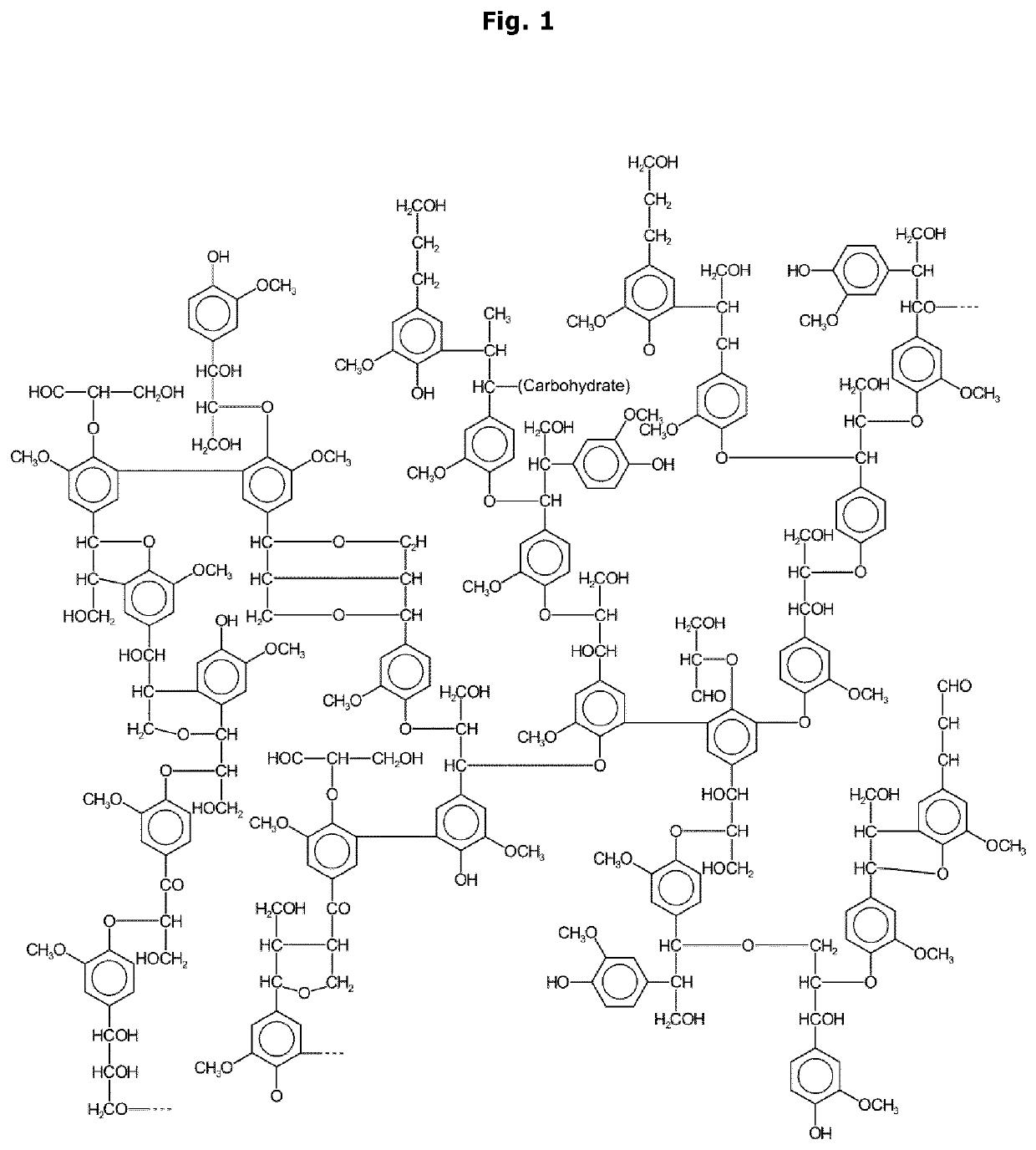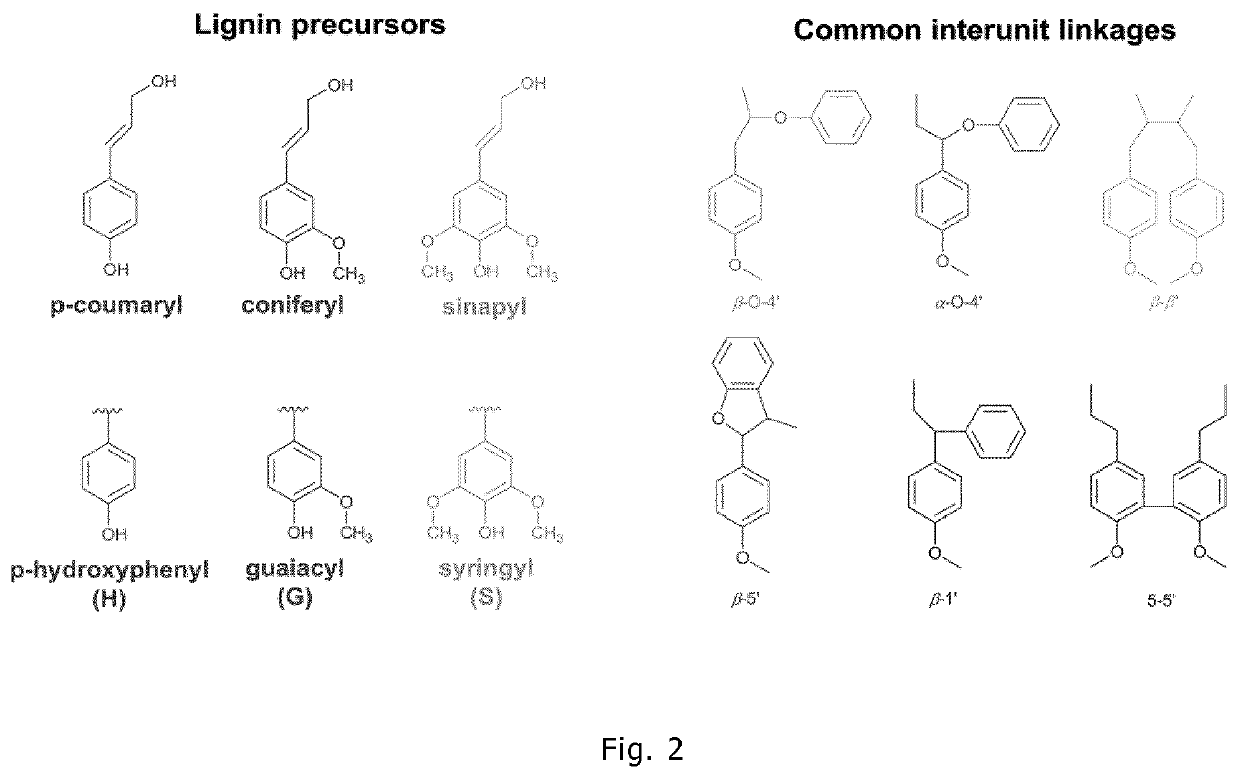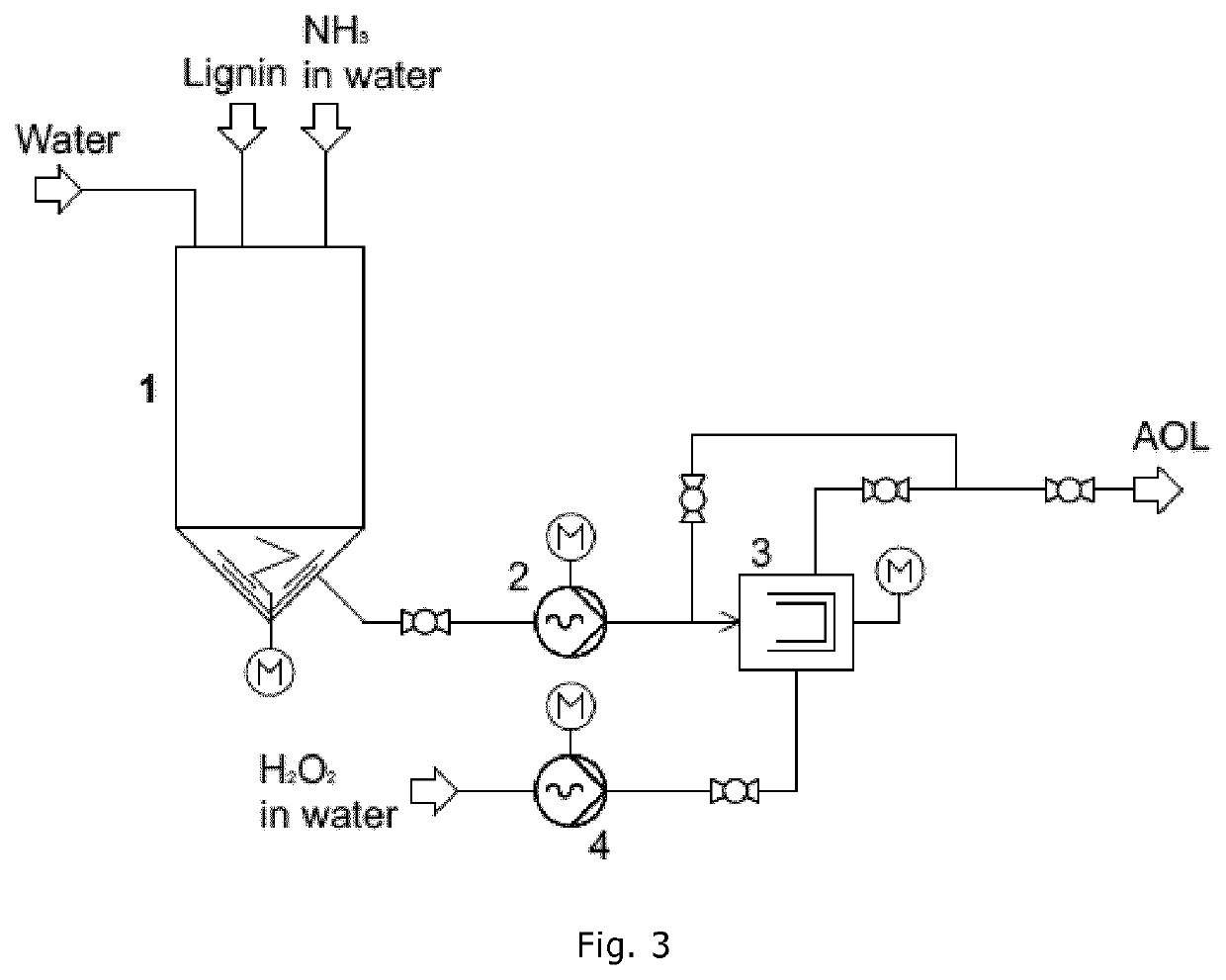Method for producing oxidized lignins
- Summary
- Abstract
- Description
- Claims
- Application Information
AI Technical Summary
Benefits of technology
Problems solved by technology
Method used
Image
Examples
example 1
[0153]71.0 g lignin UPM Biopiva 100 was dissolved in 149.0 g water at 20° C. and added 13.3 g 25% NH4OH and stirred for 1 h by magnetic stirrer, where after 16.8 g H2O2 30% was added slowly during agitation. The temperature was increased to 60° C. in the water bath. After 1 h of oxidation, the water bath was cooled and hence the reaction was stopped. The resulting material was analysed for COOH, dry solid matter, pH, viscosity and density.
example 5
[0154]71.0 g lignin UPM Biopiva 100 was dissolved in 88.8 g water at 20° C. and added 13.3 g 25% NH4OH and stirred for 1 h by magnetic stirrer. PEG 200, 22.8 g was added and stirred for 10 min, where after 16.7 g H2O2 30% was added slowly during agitation. The temperature was increased to 60° C. in the water bath. After 1 h of oxidation, the water bath was cooled and hence the reaction was stopped. The resulting material was analysed for COOH, dry solid matter, pH, viscosity and density.
example 3
[0155]71.0 g lignin UPM Biopiva 100 was dissolved in 57.1 g water at 20° C. and added 13.3 g 25% NH4OH and stirred for 1 h by mechanical stirrer, where after 16.6 g H2O2 30% was added slowly during agitation. The temperature was increased to 60° C. in the water bath. After 1 h of oxidation, the water bath was cooled and hence the reaction was stopped. The resulting material was analysed for COOH, dry solid matter, pH, viscosity and density.
PUM
| Property | Measurement | Unit |
|---|---|---|
| Temperature | aaaaa | aaaaa |
| Temperature | aaaaa | aaaaa |
| Time | aaaaa | aaaaa |
Abstract
Description
Claims
Application Information
 Login to View More
Login to View More - R&D
- Intellectual Property
- Life Sciences
- Materials
- Tech Scout
- Unparalleled Data Quality
- Higher Quality Content
- 60% Fewer Hallucinations
Browse by: Latest US Patents, China's latest patents, Technical Efficacy Thesaurus, Application Domain, Technology Topic, Popular Technical Reports.
© 2025 PatSnap. All rights reserved.Legal|Privacy policy|Modern Slavery Act Transparency Statement|Sitemap|About US| Contact US: help@patsnap.com



